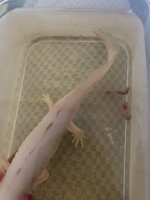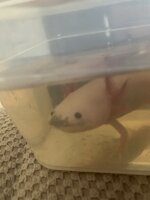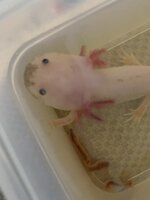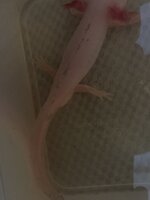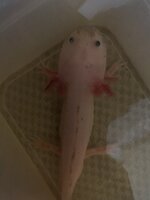PeterTse
New member
Hey! I'm an owner of a 2 1/2 year old axie. He's not very big but fsr still growing. I recently switched him to a nightcrawler diet and he's been getting nice and big, growing 1-2 inches in the last few months. The main reason for me writing this post is because he has had some grey film and spots developing mainly on his snout, but also some on the gills. I became concerned when his gills got some dark lines on them. I attached a photo. Should I be concerned? I did some research and saw that it could be a fungal infection if it looks like its fuzzy, which I don't think it is. II also saw it could be biofilm from plants and other things. I did have some plants that all died unfortunately so i just took them all out today when I was cleaning his tank. What should I do in this situation?
Thanks!
Thanks!

